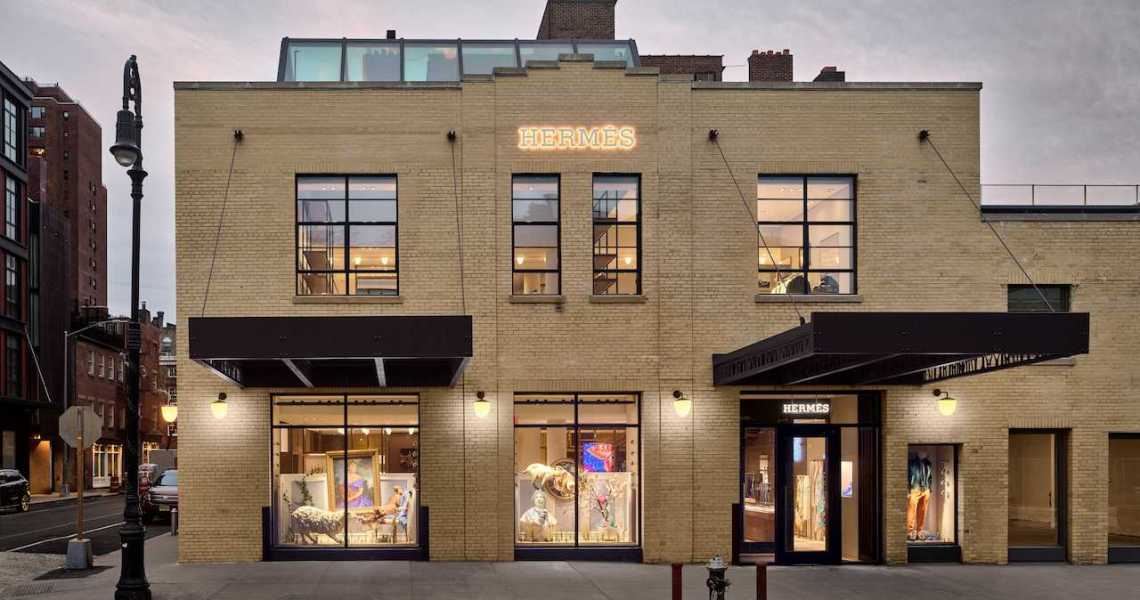Publicly traded luxury companies like LVMH and Hermès are flying higher than ever, but their non-luxury counterparts are struggling. Read more below, along with analyses of Inditex abandoning its Russian business and Zegna’s plans for the future. Don’t forget to subscribe to the Glossy Podcast for interviews with fashion industry leaders and Week in Review episodes, and the Glossy Beauty Podcast for interviews from the beauty industry. –Danny Parisi, sr. fashion reporter
LVMH, Hermès soar while non-luxury brands struggle
The gap between luxury fashion and the rest of the industry is continuing to grow. Case in point: Hermès ballooned past $218 billion in value last week, its highest ever, making it one of the most valuable companies in Europe and the second highest in luxury fashion behind LVMH.
LVMH, in turn, has also soared in valuation. The company saw a record $86 billion in revenue last year and is valued at more than $450 billion, making it one of the most valuable companies in the world. LVMH’s controlling shareholder Bernard Arnault has in turn become the richest person in the world, with his personal wealth surpassing $200 billion. This makes him only the third person ever to have over $200 billion and the first non-American.
Meanwhile, non-luxury companies are having a far tougher time. Levi’s reported its earnings last week, and despite its revenue rising slightly from $1.62 billion to $1.69 billion from a year prior, its profit margins decreased. The company blamed the loss in profits on more discounts in order to sell through inventory that wasn’t moving, as well as $11.4 million in layoff-related severance benefits and $18.2 million in discontinued technology costs.
On the same note, I wrote last week about Express possibly being delisted from the NYSE due to its share price falling below the $1 threshold.
Clearly, investors are noting the widening gap between the giant luxury companies and their non-luxury counterparts. As a larger economic downturn looks increasingly likely, investors see these luxury brands as more capable of weathering the storm and, therefore, a safer investment. Consequently, the non-luxury brands are being forced to cut costs wherever they can — like Levi’s layoffs — in order to turn a better profit and look more attractive to investors.
Ad position: web_incontent_pos1
Many of the brand investors I’ve spoken to in the last few weeks are expecting this trend to continue. As Imran Khan from Verishop told me at Shoptalk, “Things are going to get a lot worse.”
Fashion’s long, slow breakup with Russia continues
After the Russian invasion of Ukraine, a vast number of brands discontinued their business in Russia. But that breakup has been complicated due to bureaucratic delays and losses of revenue. Adidas predicted hundreds of millions in revenue losses from leaving Russia, for example. All deals for brands ending their business in the country need to be approved by a Russian government commission, further complicating the process.
Inditex, the parent company of brands including Zara, has found one solution to the complicated task of disentangling from Russia. The company announced last week that it sold off its Russian business, including about half of its stores in the country, to a UAE-based company. The other half of the stores will close. Under new ownership, the remaining stores will reopen under new brand names.
The exact amount that Inditex sold its Russian business for wasn’t disclosed, but at least this way the company gets something for the now-useless infrastructure it built up in Russia over the years. Inditex’s biggest competitor, H&M, is also suffering from the loss of business in Russia. In January, the company partially blamed its 80% loss in profitability on the shutdown of business there.
Ad position: web_incontent_pos2
Zegna’s plan to break $2 billion
Zegna has continued its rise to compete with the other big luxury fashion conglomerates, reporting double-digit retail growth for both Ermenegildo Zegna and Thom Browne on Thursday.
Gildo Zegna, CEO of Zegna, said he’s confident the imminent return of luxury spending in China will bolster that growth even more, with a plan to reach more than $2 billion in annual revenue across the Group’s brands in 2025.
To get there, Zegna will be relying on its recent acquisitions, like Thom Browne and Tom Ford, as well as the Zegna X mobile app, which drives more than a third of the brand’s revenue. The company wants to open more Thom Browne stores, as well as new stores for all its brands in areas including Saudi Arabia and India.
Analysts have said that Zegna’s logo-free, elegant dressing is perfectly suited for where fashion trends are headed: away from garish and toward “quiet luxury.”


